This Hack will Make You a Better Trader
So, guys, welcome to VRDNation. This channel is focused on helping our fellow investors and traders, and we create great educational content using animations, real-life case studies and live trading. So, if you’re new to this channel and if you’re hearing me for the first time, do not forget to subscribe.
So, the title of this particular video makes a very bold claim, right? So, one simple hack that will make you a better trader and that puts a lot of pressure on me to deliver on this promise. But I’m confident that what I have to say is definitely, not probably, definitely going to improve your trading performance.
I will demonstrate that using one live example, one live trade that I took this week so that you can understand from a real-life perspective. So, without any further ado, let’s talk about that hack. So, the hack is very simple. Trade your charts, not your P&L (Profit & Loss). So, what does it mean?
Well, most of us, when we take a trade, what is the one thing that we are constantly focused on – our profits and losses, right? Yes or no. Am I making profits or am I making losses? Profits or Loss, Profits or Loss. So, throughout the trade, our eyes are glued to this position screen. And I know this very well because I trade for a living and I have to deal with this every day. So, we all have this natural curiosity to know how the trade is performing on a real-time basis. It’s a very obvious thing. So, there is nothing wrong with it, right? Well, there is something fundamentally wrong with it. And let me explain what that is.
See when we take a trade, two parts of a brain get engaged, the rational side and the emotional side. The rational side of the brain is the one that is doing the heavy lifting, right? That’s the one doing the critical thinking. That’s the one that is analyzing what to trade when to trade, how much to trade when to act to a position and when to get out of the position.
Now the emotional side of the brain does no heavy lifting. So, through this side of the brain, we experience emotions, We experience feelings, so feelings of fear, greed, uncertainty under confidence, over-confidence, excitement, depression, euphoria. Right? We experienced so many different types of emotions and none of these emotions is helping in trading and none of them is helping you become a better trader.
So, the problem with constantly looking at your position screen, looking at your profits and losses is that you are feeding the emotional side of the brain, right? So, you are making it more dominant than the rational side. And it starts very, very slowly. I mean, you won’t even know what is going on, but what happens is that the longer you stare at your profits and loss the stronger these feelings get, and the weaker your logic gets. And at one point in time, these feelings completely start to dominate our rational brain and we become prone to all sorts of psychological issues.
Real-Life Example
So now let me give you a real-life example of this. Now, as many of you know, that I trade actively on the expiry days and these days can be very volatile. So, what I did was that when I took a trade, I recorded on one of the monitors, how the profits and losses were fluctuating, but I was not looking at that monitor, I was just letting it record. I was looking at other monitors with my chart and other things that I track, but I wanted to record the P&L situations to share that with you guys.
So, this is the fun part. Take a look at what happened to this particular trade started working out perfectly fine. It, everything looked great right from the get-go. I was making a profit of almost about 40,000 rupees, but then what happened immediately was the market came down and all these profits were gone and for about two hours, that trade was in losses and the losses just kept going higher and higher. So how do you think that feels; a profitable trade going in losses? It makes us feel miserable. Well, that’s not the whole story. So then after what seemed like an eternity, that trade turned around, back into the green.
So, what do you think I should have done? Right. So, I was sitting on a trade, which was incurring losses, and now I have the opportunity to get out of the trade. So, I should have taken that opportunity, right? Well, I did not because I was not looking at the P&L. So, I was looking at the charts and the charts were telling me that everything was fine. Everything was going according to the plan, there was no need for panic, let it play out. But the story is not over and from those little profits that we saw temporarily, the trade slipped back into the red and this time the losses went all the way up to 30,000 rupees.
So, guys, this is the roller coaster of emotions that we feel when we are focused on looking at the profits and losses in a trade. Anyways I was spared from this emotional roller coaster ride because I was trading the charts and was not trading the P&L. So, I was focusing on the charts and I was not looking at the P&L screen and that eventually paid off. So, I took one exit in profits at somewhere around 30,000 rupees, but then I re-entered into the trade because the charts were looking great and what eventually ended up happening was that I closed this trade with a profit of over 90,000 rupees.
If you look at the charts, you will know the power of this exit because after I exited this trade right here, the market went down and this trade would have gone back into losses.
So, guys, just pause here for a second and think if I were staring at my P&L, all this time don’t you think that my emotions would have forced me to take a bad exit? This is because that is exactly what happens to so many of us that we make decisions based on these profits and loss fluctuations and that is exactly why I don’t look at this profit and loss screen because it makes you emotionally weak. It makes you take bad decisions.
So, what am I asking you to do? Well? I’m asking you to stop looking at your profits and loss screen and focus on your trade, focus on what the charts are telling you, focus on what the market is trying to tell you, focus on your position size, focus on your exit signals. There are so many other things to focus on this particular position screen and the fluctuations in profits and losses adding zero value to your trade.
And in fact, they’re distracting you from performing at your peak potential. So, the way I do it is that before taking a trade, I write down on a piece of paper or sometimes directly on the charts where will I exit the trade, if it works out or if it doesn’t work out. And from that point onwards, I’m only and only focusing on the charts. I’m not looking at my P&L screen.
And if I get an exit signal on the charts, I’m getting out of the trade. Doesn’t matter how many profits or losses I am sitting on. So, guys, I have given you the growth hack, but I can also tell you from experience that it is a piece of very hard advice to follow.
See what happens is that we behave one way when we are out of a trade and we behave completely differently when we are in a trade. So tomorrow, or the next time when you were in trade, there would be a temptation to just take a quick look at your P&L, right? Just to see what is going on, what is the harm, but that is what separates successful traders from the unsuccessful ones. Successful traders rise about their shortcomings using their willpower, using their discipline, and developing emotional control.
Now, I want to end this video on a spiritual note. See, I’m not a very religious person, but even I believe that we don’t have any right on the outcome of what we do in life. Our right, our control is on what we do on our actions. So, we just have to do our best and leave the rest. In the same way, we don’t have a lot of control over the outcome of the trade.
Right. We have to focus on what is in our control, that is analyzing the charts, analyzing the trade, analyzing the global cues and analyzing the local cues. If you focus on that, things eventually would work out. But if you focus on the outcome and the profits and losses, then most likely you will keep making mistakes.
So, with that said, I hope that you will consider my advice and focus more on your chart.
Howdy!
If you’re here for the first time, let’s get introduced.
VRD Nation is India’s premier stock market training institute and we (Team VRD Nation) are passionate about teaching each and every aspect of investing and trading.
If you’re here for the first time, don’t forget to check out “Free Training” section where we have tons of free videos and articles to kick start your stock market journey.
Also, we got two awesome YouTube channels where you can continue the learning process.
Must-Read Articles
This Hack will Make You a Better Trader
So, guys, welcome to VRDNation. This channel is focused on helping our fellow investors and traders, and we create great educational content using animations, real-life case studies and live trading. So, if you’re new to this channel and if you’re hearing me for the first time, do not forget to subscribe.
So, the title of this particular video makes a very bold claim, right? So, one simple hack that will make you a better trader and that puts a lot of pressure on me to deliver on this promise. But I’m confident that what I have to say is definitely, not probably, definitely going to improve your trading performance.
I will demonstrate that using one live example, one live trade that I took this week so that you can understand from a real-life perspective. So, without any further ado, let’s talk about that hack. So, the hack is very simple. Trade your charts, not your P&L (Profit & Loss). So, what does it mean?
Well, most of us, when we take a trade, what is the one thing that we are constantly focused on – our profits and losses, right? Yes or no. Am I making profits or am I making losses? Profits or Loss, Profits or Loss. So, throughout the trade, our eyes are glued to this position screen. And I know this very well because I trade for a living and I have to deal with this every day. So, we all have this natural curiosity to know how the trade is performing on a real-time basis. It’s a very obvious thing. So, there is nothing wrong with it, right? Well, there is something fundamentally wrong with it. And let me explain what that is.
See when we take a trade, two parts of a brain get engaged, the rational side and the emotional side. The rational side of the brain is the one that is doing the heavy lifting, right? That’s the one doing the critical thinking. That’s the one that is analyzing what to trade when to trade, how much to trade when to act to a position and when to get out of the position.
Now the emotional side of the brain does no heavy lifting. So, through this side of the brain, we experience emotions, We experience feelings, so feelings of fear, greed, uncertainty under confidence, over-confidence, excitement, depression, euphoria. Right? We experienced so many different types of emotions and none of these emotions is helping in trading and none of them is helping you become a better trader.
So, the problem with constantly looking at your position screen, looking at your profits and losses is that you are feeding the emotional side of the brain, right? So, you are making it more dominant than the rational side. And it starts very, very slowly. I mean, you won’t even know what is going on, but what happens is that the longer you stare at your profits and loss the stronger these feelings get, and the weaker your logic gets. And at one point in time, these feelings completely start to dominate our rational brain and we become prone to all sorts of psychological issues.
Real-Life Example
So now let me give you a real-life example of this. Now, as many of you know, that I trade actively on the expiry days and these days can be very volatile. So, what I did was that when I took a trade, I recorded on one of the monitors, how the profits and losses were fluctuating, but I was not looking at that monitor, I was just letting it record. I was looking at other monitors with my chart and other things that I track, but I wanted to record the P&L situations to share that with you guys.
So, this is the fun part. Take a look at what happened to this particular trade started working out perfectly fine. It, everything looked great right from the get-go. I was making a profit of almost about 40,000 rupees, but then what happened immediately was the market came down and all these profits were gone and for about two hours, that trade was in losses and the losses just kept going higher and higher. So how do you think that feels; a profitable trade going in losses? It makes us feel miserable. Well, that’s not the whole story. So then after what seemed like an eternity, that trade turned around, back into the green.
So, what do you think I should have done? Right. So, I was sitting on a trade, which was incurring losses, and now I have the opportunity to get out of the trade. So, I should have taken that opportunity, right? Well, I did not because I was not looking at the P&L. So, I was looking at the charts and the charts were telling me that everything was fine. Everything was going according to the plan, there was no need for panic, let it play out. But the story is not over and from those little profits that we saw temporarily, the trade slipped back into the red and this time the losses went all the way up to 30,000 rupees.
So, guys, this is the roller coaster of emotions that we feel when we are focused on looking at the profits and losses in a trade. Anyways I was spared from this emotional roller coaster ride because I was trading the charts and was not trading the P&L. So, I was focusing on the charts and I was not looking at the P&L screen and that eventually paid off. So, I took one exit in profits at somewhere around 30,000 rupees, but then I re-entered into the trade because the charts were looking great and what eventually ended up happening was that I closed this trade with a profit of over 90,000 rupees.
If you look at the charts, you will know the power of this exit because after I exited this trade right here, the market went down and this trade would have gone back into losses.
So, guys, just pause here for a second and think if I were staring at my P&L, all this time don’t you think that my emotions would have forced me to take a bad exit? This is because that is exactly what happens to so many of us that we make decisions based on these profits and loss fluctuations and that is exactly why I don’t look at this profit and loss screen because it makes you emotionally weak. It makes you take bad decisions.
So, what am I asking you to do? Well? I’m asking you to stop looking at your profits and loss screen and focus on your trade, focus on what the charts are telling you, focus on what the market is trying to tell you, focus on your position size, focus on your exit signals. There are so many other things to focus on this particular position screen and the fluctuations in profits and losses adding zero value to your trade.
And in fact, they’re distracting you from performing at your peak potential. So, the way I do it is that before taking a trade, I write down on a piece of paper or sometimes directly on the charts where will I exit the trade, if it works out or if it doesn’t work out. And from that point onwards, I’m only and only focusing on the charts. I’m not looking at my P&L screen.
And if I get an exit signal on the charts, I’m getting out of the trade. Doesn’t matter how many profits or losses I am sitting on. So, guys, I have given you the growth hack, but I can also tell you from experience that it is a piece of very hard advice to follow.
See what happens is that we behave one way when we are out of a trade and we behave completely differently when we are in a trade. So tomorrow, or the next time when you were in trade, there would be a temptation to just take a quick look at your P&L, right? Just to see what is going on, what is the harm, but that is what separates successful traders from the unsuccessful ones. Successful traders rise about their shortcomings using their willpower, using their discipline, and developing emotional control.
Now, I want to end this video on a spiritual note. See, I’m not a very religious person, but even I believe that we don’t have any right on the outcome of what we do in life. Our right, our control is on what we do on our actions. So, we just have to do our best and leave the rest. In the same way, we don’t have a lot of control over the outcome of the trade.
Right. We have to focus on what is in our control, that is analyzing the charts, analyzing the trade, analyzing the global cues and analyzing the local cues. If you focus on that, things eventually would work out. But if you focus on the outcome and the profits and losses, then most likely you will keep making mistakes.
So, with that said, I hope that you will consider my advice and focus more on your chart.

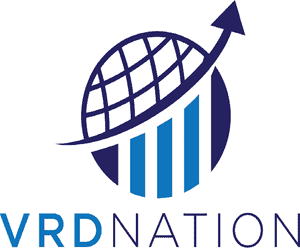


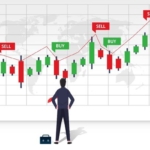


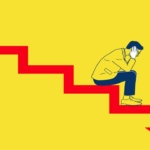


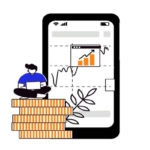


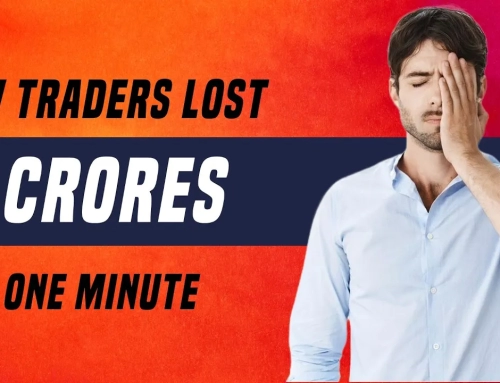
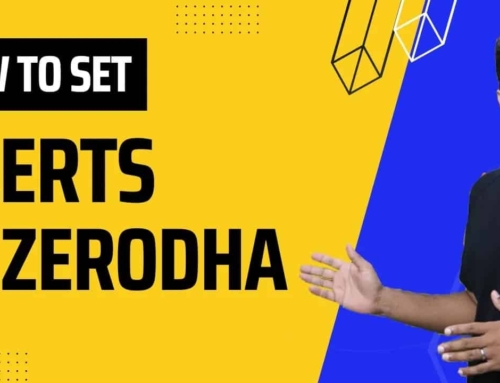
![What is Virtual Contract Note [Zerodha]](https://www.vrdnation.com/wp-content/uploads/2023/10/maxresdefault-virtual-note-500x383.jpg)
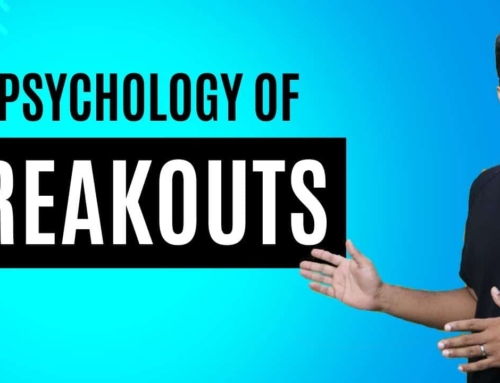
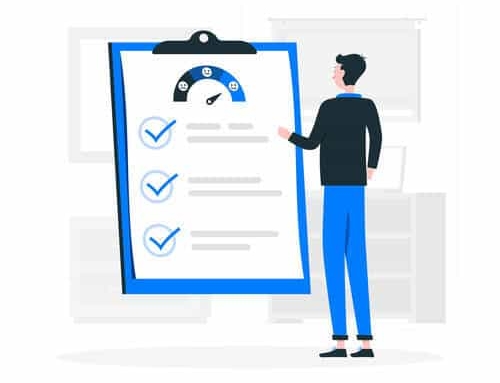

Leave A Comment